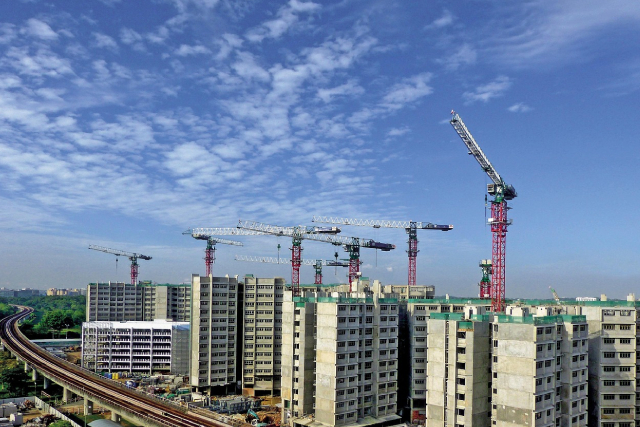
26 Jun PVC Pipe Fittings: What You Need To Know About Pressure
When it comes to plumbing, most of us tend to think about pipe size, fitting shape, or maybe even colour coding. But pressure? That’s often left out of the conversation until something bursts or leaks. The truth is, understanding pressure is just as important as getting the right type of elbow joint or coupling.
Pressure plays a massive role in the performance and safety of any plumbing system. Whether you’re managing a household water supply, an industrial system, or an irrigation line, selecting the right fittings that can handle the required pressure levels is crucial. Overlooking this factor can lead to pipe failures, unnecessary maintenance costs, or even dangerous situations.
What does “pressure-rated” mean?
PVC pipe fittings are usually labelled with a pressure rating, a number that tells you the maximum pressure (usually in pounds per square inch, or psi) that the fitting can handle. These ratings help determine how the fitting will perform under typical working conditions and during sudden pressure surges, often referred to as water hammer.
Say a PVC fitting is rated for 150 psi. This means it can safely carry fluids at pressures up to 150 psi without cracking, warping, or leaking. But that rating isn’t just plucked out of the air; it’s based on controlled testing, and manufacturers factor in a safety margin. Even so, you should never design a system that pushes the pressure limit.
Why pressure ratings matter in real-life systems
Imagine you’re installing a water supply line for a high-rise building. That’s a lot of water moving across multiple floors, and gravity creates pressure. Go too low on the pressure rating, and your fittings could fail, leading to water damage and costly repairs.
Or take irrigation systems in gardens or farms. A sudden change in pressure due to someone turning a valve quickly can cause a water hammer effect. If your fittings aren’t pressure-rated appropriately, this shockwave can damage them over time.
This is where understanding the pressure class (or “PN” rating) becomes essential.
Understanding pressure classes (PN ratings)
Pressure classes are usually marked with a PN number, such as PN10 or PN16. “PN” stands for “Pressure Nominal” and is a standard way to define how much pressure a pipe or fitting can handle in bar (1 bar ≈ 14.5 psi). A PN10 fitting, for example, is built to withstand up to 10 bar, or roughly 145 psi.
The higher the PN rating, the thicker the walls of the pipe or fitting and the more pressure it can tolerate. However, thicker doesn’t always mean better. Using a higher-rated fitting than necessary may increase costs and make installation harder without offering any practical benefit.
Choosing the right fittings for your needs
When selecting pressure-rated PVC pipe fittings, you need to ask yourself three key questions:
1. What’s the maximum operating pressure of your system? – Understand your system’s working conditions. A home plumbing line may only need PN10 fittings, but an industrial system might require PN16 or higher.
2. Are there pressure surges or fluctuations? – If your system has frequent on-off cycles or sudden valve changes, it’s worth choosing fittings with a bit of buffer beyond the average operating pressure.
3. What’s the temperature range? – Pressure ratings are typically based on 20°C. Higher temperatures can reduce the fitting’s strength. Always check temperature-derating charts provided by the manufacturer.
Local needs, global standards
In a country like Singapore, where high-rise buildings and modern plumbing systems are the norm, choosing the right pressure-rated fittings becomes even more vital. With a dense urban environment and limited space for pipe maintenance or repair, it’s essential to get it right the first time.
Singapore PVC pipe systems are commonly used in everything from residential water supply to commercial building services and even industrial wastewater. Because of the island’s tropical climate and modern infrastructure demands, fittings need to meet high standards, both in terms of pressure and durability.
Material matters, too
Not all PVC is the same. Some fittings are made from Schedule 40 PVC, while others use Schedule 80, which is thicker and can handle more pressure. Always check whether the material and pressure rating suit your system’s needs. In fact, PVC remains the most popular pipe material today because of its balance of cost-effectiveness, strength, and resistance to corrosion, making it a go-to choice for both residential and commercial plumbing applications.
Also, be cautious of mixing materials. Combining fittings of different pressure ratings can lead to system weaknesses. It’s best to stick to one pressure class across a section of the system unless a qualified plumber or engineer designs the transitions.
Proper installation helps maintain pressure integrity
Even the best-rated fitting can fail if not installed correctly. Use proper solvent cement, allow curing time, and avoid overtightening during assembly. Misalignment and stress during installation can also compromise pressure performance, so always follow manufacturer guidelines.
And over time, even pressure-rated fittings can wear down, especially in high-pressure or chemical-heavy systems. Regular inspections can help catch small issues before they turn into big ones. Look for signs of wear like bulging, discolouration, or slow leaks around joints.
Also, if your system undergoes any changes, like increased flow rate, pump upgrades, or temperature adjustments, reassess whether your current fittings can still handle the job.
Conclusion
Pressure-rated PVC fittings are essential components that ensure your plumbing system stays safe and efficient. By paying close attention to pressure ratings, material types, and proper installation, you can avoid costly mistakes and future system failures.
For those in Singapore looking for dependable and high-quality fittings, Vicplas offers a comprehensive range of over 400 designs of pipe and pipe fittings. Whether you’re building new systems or upgrading existing ones, Vicplas has the right components to help your project succeed.
